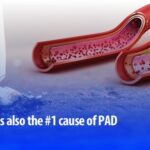To figure out why zits are painful, it’s important to first understand what pimples actually are. According to the Mayo Clinic, these red, raised bumps are essentially blockages. They develop when hair follicles in your skin become clogged with a mix of dead skin cells, oil, or bacteria. It’s this very blockage that is often the source of the discomfort you feel.
When bacteria and other debris get trapped inside a pore, it can lead to an infection. Your body’s immune system then kicks in to fight off this infection. This natural response causes the area to become red, swollen, inflamed, and sensitive to touch, explains Tashara Lester, FNP-C, a certified family nurse practitioner specializing in dermatology at U.S. Dermatology Partners in Dallas.
Sometimes, a pimple might develop a raised white center – which is a visible sign of pus underneath the skin. However, even hard, raised pimples without any pus can still be quite tender, according to the Cleveland Clinic.
Effective Ways to Soothe Pimple Pain
The most important rule to remember is to resist the temptation to pick at or pop your pimple, advises Lester. Squeezing a pimple will likely only intensify the pain. Moreover, it can increase the risk of further infection or worsen an existing one, and can even lead to scarring, warns the American Academy of Dermatology (AAD).
Once you’ve decided to leave the pimple alone, there are several simple, at-home steps you can take. Often, these remedies are enough to reduce pimple pain and help it heal faster. Here’s what you can do:
1. Cool it Down with Ice
“You can apply ice wrapped in a thin paper towel directly to the pimple for short intervals of five to ten minutes, with 15-minute breaks in between applications,” Lester suggests. This method helps to quickly reduce swelling and alleviate pain. The cold temperature constricts blood vessels, which can decrease inflammation and numb the area, providing fast relief.
2. Treat with Benzoyl Peroxide
Apply a small amount of an acne spot treatment containing 2% benzoyl peroxide, such as Neutrogena On-The-Spot Acne Treatment. Benzoyl peroxide is effective in killing the bacteria that contribute to acne development. By targeting these bacteria, it can effectively reduce inflammation and swelling, says Lester. This over-the-counter medication is a common and readily available solution.
3. Use Warm Compresses
Once you observe your pimple beginning to form a white center, it’s time to switch to warm compresses. “Apply a warm washcloth to the affected area for five to ten minutes at a time, repeating this two to three times per day,” Lester recommends. The warmth helps to encourage drainage, which can relieve pressure and pain. Warm compresses can also help to soften the skin and bring the pus to the surface, promoting healing.
When Painful Pimples Require a Dermatologist
If you’ve been experiencing painful pimples for more than a month and haven’t found relief from at-home or over-the-counter treatments, it’s advisable to consult a board-certified dermatologist, Lester recommends. Persistent painful pimples could be an indication of cystic acne, a more severe form of inflammatory acne that is often challenging to treat at home.
A dermatologist has several options to address cystic acne. They might choose to use a corticosteroid injection to quickly shrink the cyst, or they may decide to open the cyst to drain it, according to the Cleveland Clinic. Additionally, they might prescribe prescription-strength topical creams to help clear up existing blemishes and prevent new ones from forming. Seeking professional help ensures you receive targeted and effective treatment for persistent or severe acne.
